docker run mysql -e 的环境变量 Environment Variables
例子
sudo docker run -itd --name DockerMysqlLatest3307 -p 3307:3306 -e MYSQL_ROOT_PASSWORD='root的密码' mysql:latest
### root无密码
sudo docker run -itd --name Mysql57 -p 57:3306 -e MYSQL_ALLOW_EMPTY_PASSWORD='root' mysql:5.7
https://hub.docker.com/_/mysql?tab=description
Environment Variables (docker run -e 的环境变量)
When you start the mysql image, you can adjust the configuration of the MySQL instance by passing one or more environment variables on the docker run command line. Do note that none of the variables below will have any effect if you start the container with a data directory that already contains a database: any pre-existing database will always be left untouched on container startup.
See also https://dev.mysql.com/doc/refman/5.7/en/environment-variables.html for documentation of environment variables which MySQL itself respects (especially variables like MYSQL_HOST, which is known to cause issues when used with this image).
-
MYSQL_ROOT_PASSWORD
This variable is mandatory and specifies the password that will be set for the MySQL root superuser account. In the above example, it was set to my-secret-pw. -
MYSQL_DATABASE
This variable is optional and allows you to specify the name of a database to be created on image startup. If a user/password was supplied (see below) then that user will be granted superuser access (corresponding to GRANT ALL) to this database. -
MYSQL_USER, MYSQL_PASSWORD
These variables are optional, used in conjunction to create a new user and to set that user’s password. This user will be granted superuser permissions (see above) for the database specified by the MYSQL_DATABASE variable. Both variables are required for a user to be created.
Do note that there is no need to use this mechanism to create the root superuser, that user gets created by default with the password specified by the MYSQL_ROOT_PASSWORD variable.
-
MYSQL_ALLOW_EMPTY_PASSWORD
This is an optional variable. Set to a non-empty value, like yes, to allow the container to be started with a blank password for the root user. NOTE: Setting this variable to yes is not recommended unless you really know what you are doing, since this will leave your MySQL instance completely unprotected, allowing anyone to gain complete superuser access. -
MYSQL_RANDOM_ROOT_PASSWORD
This is an optional variable. Set to a non-empty value, like yes, to generate a random initial password for the root user (using pwgen). The generated root password will be printed to stdout (GENERATED ROOT PASSWORD: …). -
MYSQL_ONETIME_PASSWORD
Sets root (not the user specified in MYSQL_USER!) user as expired once init is complete, forcing a password change on first login. Any non-empty value will activate this setting. NOTE: This feature is supported on MySQL 5.6+ only. Using this option on MySQL 5.5 will throw an appropriate error during initialization. -
MYSQL_INITDB_SKIP_TZINFO
By default, the entrypoint script automatically loads the timezone data needed for the CONVERT_TZ() function. If it is not needed, any non-empty value disables timezone loading.
Docker Secrets
As an alternative to passing sensitive information via environment variables, _FILE may be appended to the previously listed environment variables, causing the initialization script to load the values for those variables from files present in the container. In particular, this can be used to load passwords from Docker secrets stored in /run/secrets/<secret_name> files. For example:
$ docker run --name some-mysql -e MYSQL_ROOT_PASSWORD_FILE=/run/secrets/mysql-root -d mysql:tag
Currently, this is only supported for MYSQL_ROOT_PASSWORD, MYSQL_ROOT_HOST, MYSQL_DATABASE, MYSQL_USER, and MYSQL_PASSWORD.
Deploying MySQL on Linux with Docker : 在Linux上用docker部署MySQL : https://dev.mysql.com/doc/refman/8.0/en/linux-installation-docker.html
MySQL官方文档对dockers关于mysql的环境变量的说明
Docker Environment Variables
When you create a MySQL Server container, you can configure the MySQL instance by using the --env option (short form -e) and specifying one or more environment variables. No server initialization is performed if the mounted data directory is not empty, in which case setting any of these variables has no effect (see Persisting Data and Configuration Changes), and no existing contents of the directory, including server settings, are modified during container startup.
Environment variables which can be used to configure a MySQL instance are listed here:
The boolean variables including MYSQL_RANDOM_ROOT_PASSWORD, MYSQL_ONETIME_PASSWORD, MYSQL_ALLOW_EMPTY_PASSWORD, and MYSQL_LOG_CONSOLE are made true by setting them with any strings of nonzero lengths. Therefore, setting them to, for example, “0”, “false”, or “no” does not make them false, but actually makes them true. This is a known issue.
MYSQL_RANDOM_ROOT_PASSWORD: When this variable is true (which is its default state, unless MYSQL_ROOT_PASSWORD is set or MYSQL_ALLOW_EMPTY_PASSWORD is set to true), a random password for the server’s root user is generated when the Docker container is started. The password is printed to stdout of the container and can be found by looking at the container’s log (see Starting a MySQL Server Instance).
MYSQL_ONETIME_PASSWORD: When the variable is true (which is its default state, unless MYSQL_ROOT_PASSWORD is set or MYSQL_ALLOW_EMPTY_PASSWORD is set to true), the root user’s password is set as expired and must be changed before MySQL can be used normally.
MYSQL_DATABASE: This variable allows you to specify the name of a database to be created on image startup. If a user name and a password are supplied with MYSQL_USER and MYSQL_PASSWORD, the user is created and granted superuser access to this database (corresponding to GRANT ALL). The specified database is created by a CREATE DATABASE IF NOT EXIST statement, so that the variable has no effect if the database already exists.
MYSQL_USER, MYSQL_PASSWORD: These variables are used in conjunction to create a user and set that user’s password, and the user is granted superuser permissions for the database specified by the MYSQL_DATABASE variable. Both MYSQL_USER and MYSQL_PASSWORD are required for a user to be created—if any of the two variables is not set, the other is ignored. If both variables are set but MYSQL_DATABASE is not, the user is created without any privileges.
Note
There is no need to use this mechanism to create the root superuser, which is created by default with the password set by either one of the mechanisms discussed in the descriptions for MYSQL_ROOT_PASSWORD and MYSQL_RANDOM_ROOT_PASSWORD, unless MYSQL_ALLOW_EMPTY_PASSWORD is true.
MYSQL_ROOT_HOST: By default, MySQL creates the ‘root’@‘localhost’ account. This account can only be connected to from inside the container as described in Connecting to MySQL Server from within the Container. To allow root connections from other hosts, set this environment variable. For example, the value 172.17.0.1, which is the default Docker gateway IP, allows connections from the host machine that runs the container. The option accepts only one entry, but wildcards are allowed (for example, MYSQL_ROOT_HOST=172...* or MYSQL_ROOT_HOST=%).
MYSQL_LOG_CONSOLE: When the variable is true (which is its default state for MySQL 8.0 server containers), the MySQL Server’s error log is redirected to stderr, so that the error log goes into the Docker container’s log and is viewable using the docker logs mysqld-container command.
Note
The variable has no effect if a server configuration file from the host has been mounted (see Persisting Data and Configuration Changes on bind-mounting a configuration file).
MYSQL_ROOT_PASSWORD: This variable specifies a password that is set for the MySQL root account.
Warning
Setting the MySQL root user password on the command line is insecure. As an alternative to specifying the password explicitly, you can set the variable with a container file path for a password file, and then mount a file from your host that contains the password at the container file path. This is still not very secure, as the location of the password file is still exposed. It is preferable to use the default settings of MYSQL_RANDOM_ROOT_PASSWORD and MYSQL_ONETIME_PASSWORD both being true.
MYSQL_ALLOW_EMPTY_PASSWORD. Set it to true to allow the container to be started with a blank password for the root user.
Warning
Setting this variable to true is insecure, because it is going to leave your MySQL instance completely unprotected, allowing anyone to gain complete superuser access. It is preferable to use the default settings of MYSQL_RANDOM_ROOT_PASSWORD and MYSQL_ONETIME_PASSWORD both being true.
MySQL自身的环境变量
| Variable | Description |
|---|---|
| AUTHENTICATION_KERBEROS_CLIENT_LOG | Kerberos authentication logging level. |
| AUTHENTICATION_LDAP_CLIENT_LOG | Client-side LDAP authentication logging level. |
| AUTHENTICATION_PAM_LOG | PAM authentication plugin debug logging settings. |
| CC | The name of your C compiler (for running CMake). |
| CXX | The name of your C++ compiler (for running CMake). |
| CC | The name of your C compiler (for running CMake). |
| DBI_USER | The default user name for Perl DBI. |
| DBI_TRACE | Trace options for Perl DBI. |
| HOME | The default path for the mysql history file is $HOME/.mysql_history. |
| LD_RUN_PATH | Used to specify the location of libmysqlclient.so. |
| LIBMYSQL_ENABLE_CLEARTEXT_PLUGIN | Enable mysql_clear_password authentication plugin; see Section 6.4.1.4, “Client-Side Cleartext Pluggable Authentication”. |
| LIBMYSQL_PLUGIN_DIR | Directory in which to look for client plugins. |
| LIBMYSQL_PLUGINS | Client plugins to preload. |
| MYSQL_DEBUG | Debug trace options when debugging. |
| MYSQL_GROUP_SUFFIX | Option group suffix value (like specifying --defaults-group-suffix). |
| MYSQL_HISTFILE | The path to the mysql history file. If this variable is set, its value overrides the default for $HOME/.mysql_history. |
| MYSQL_HISTIGNORE | Patterns specifying statements that mysql should not log to $HOME/.mysql_history, or syslog if --syslog is given. |
| MYSQL_HOME | The path to the directory in which the server-specific my.cnf file resides. |
| MYSQL_HOST | The default host name used by the mysql command-line client. |
| MYSQL_OPENSSL_UDF_DH_BITS_THRESHOLD | Maximum key length for create_dh_parameters(). See Section 6.6.3, “MySQL Enterprise Encryption Usage and Examples”. |
| MYSQL_OPENSSL_UDF_DSA_BITS_THRESHOLD | Maximum DSA key length for create_asymmetric_priv_key(). See Section 6.6.3, “MySQL Enterprise Encryption Usage and Examples”. |
| MYSQL_OPENSSL_UDF_RSA_BITS_THRESHOLD | Maximum RSA key length for create_asymmetric_priv_key(). See Section 6.6.3, “MySQL Enterprise Encryption Usage and Examples”. |
| MYSQL_PS1 | The command prompt to use in the mysql command-line client. |
| MYSQL_PWD | The default password when connecting to mysqld. Using this is insecure. See note following table. |
| MYSQL_TCP_PORT | The default TCP/IP port number. |
| MYSQL_TEST_LOGIN_FILE | The name of the .mylogin.cnf login path file. |
| MYSQL_TEST_TRACE_CRASH | Whether the test protocol trace plugin crashes clients. See note following table. |
| MYSQL_TEST_TRACE_DEBUG | Whether the test protocol trace plugin produces output. See note following table. |
| MYSQL_UNIX_PORT | The default Unix socket file name; used for connections to localhost. |
| MYSQLX_TCP_PORT | The X Plugin default TCP/IP port number. |
| MYSQLX_UNIX_PORT | The X Plugin default Unix socket file name; used for connections to localhost. |
| NOTIFY_SOCKET | Socket used by mysqld to communicate with systemd. |
| PATH | Used by the shell to find MySQL programs. |
| PKG_CONFIG_PATH | Location of mysqlclient.pc pkg-config file. See note following table. |
| TMPDIR | The directory in which temporary files are created. |
| TZ | This should be set to your local time zone. See Section B.3.3.7, “Time Zone Problems”. |
| UMASK | The user-file creation mode when creating files. See note following table. |
| UMASK_DIR | The user-directory creation mode when creating directories. See note following table. |
| USER | The default user name on Windows when connecting to mysqld. |
相关文章:

docker run mysql -e 的环境变量 Environment Variables
例子 sudo docker run -itd --name DockerMysqlLatest3307 -p 3307:3306 -e MYSQL_ROOT_PASSWORDroot的密码 mysql:latest### root无密码 sudo docker run -itd --name Mysql57 -p 57:3306 -e MYSQL_ALLOW_EMPTY_PASSWORDroot mysql:5.7https://hub.docker.com/_/mysql?tabde…...

第17章 MongoDB 条件操作符教程
第17章 MongoDB 条件操作符教程 描述 条件操作符用于比较两个表达式并从mongoDB集合中获取数据。 在本章节中,咱们将讨论如何在MongoDB中使用条件操作符。 MongoDB中条件操作符有: (>) 大于 - $gt(<) 小于 - $lt(>) 大于等于 - $gte(< …...
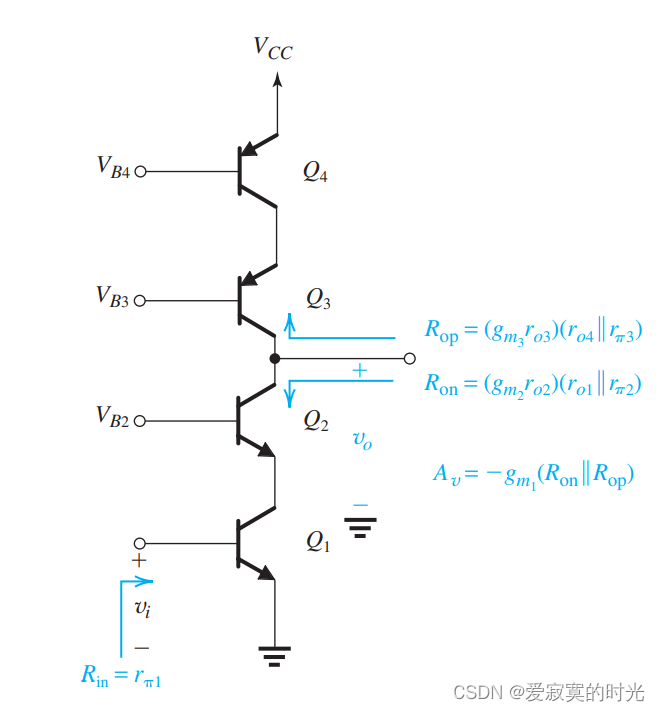
电子技术——共源共栅放大器
电子技术——共源共栅放大器 之前我们提到过,提高基础增益单元(共源放大器)的一种方法是提高其 ror_oro 的阻值,之后我们学过共栅放大器作为电流缓冲器可以做到这一点,自然地我们就得到了终极解决方案,也…...
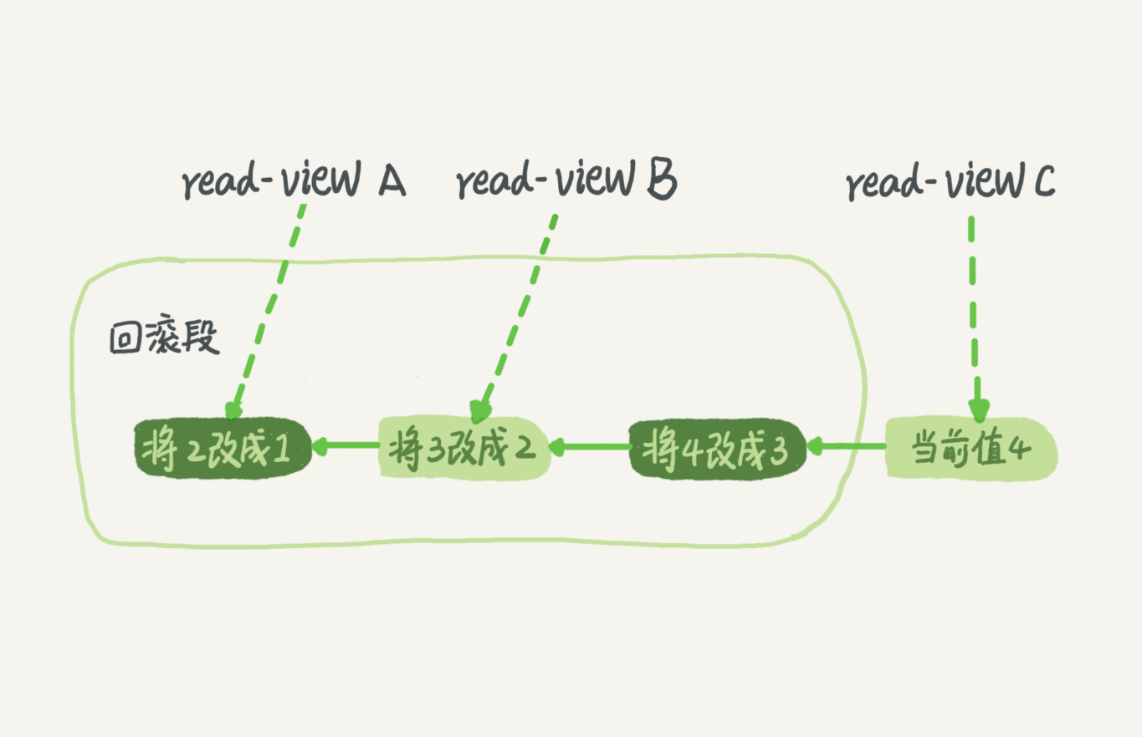
《MySQL学习》 事务隔离 与 MVCC
《MySQL学习》 事务隔离 一.事务的概念 事务保证一组数据要么全部成功要么全部失败,MySQL的事务基于引擎(如InnoDB)实现。 二.事务的隔离性与隔离级别 MySQL的标准隔离级别: 读未提交 : 一个事务还没提交时&#…...
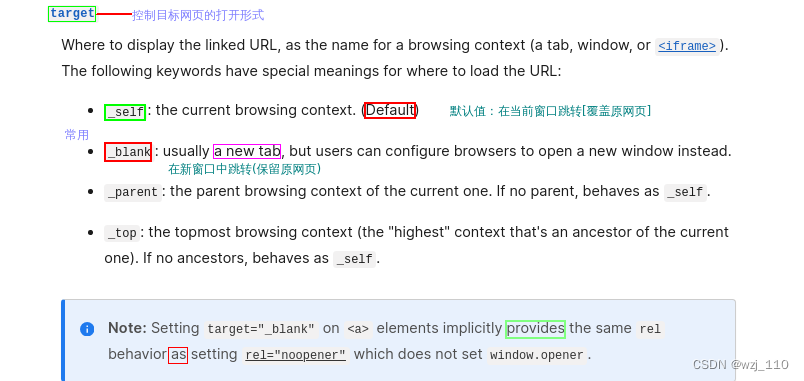
html(二)基础标签
一 HTML中的注释 重点: 在哪写注释? 注释的形式? vs code和webstorm都可以通过 ctrl / 进行单行注释和取消注释 ① html中注释的形式 1) html文档中单行和多行注释是"<!-- -->" -->html2) 在html文档中,script标签…...

leetcode刷题---递归思想
leetcode刷题---递归思想)1.1 递归介绍1.2 基本步骤1.3 代表题目1.3.1 入门题---青蛙跳1.3.2.1 初级题226.翻转二叉树112.路径总和1.3.3 中级题---汉诺塔问题1.3.4 进阶题---细胞分裂1.1 递归介绍 如果在函数中存在着调用函数本身的情况,这种现象就叫递…...
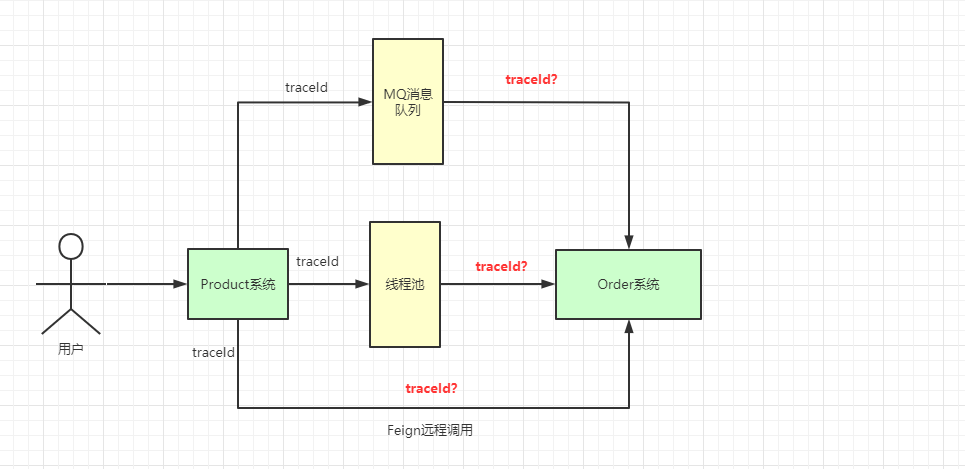
ThreadLocal 源码级别详解
ThreadLocal简介 稍微翻译一下: ThreadLocal提供线程局部变量。这些变量与正常的变量不同,因为每一个线程在访问ThreadLocal实例的时候(通过其get或set方法)都有自己的、独立初始化的变量副本。ThreadLocal实例通常是类中的私有静…...

训练营day17
110.平衡二叉树 力扣题目链接 给定一个二叉树,判断它是否是高度平衡的二叉树。 本题中,一棵高度平衡二叉树定义为:一个二叉树每个节点 的左右两个子树的高度差的绝对值不超过1。 示例 1: 给定二叉树 [3,9,20,null,null,15,7] 返回 true 。 示…...

Nodejs原型链污染
Nodejs与JavaScript和JSON 有一些人在学习JavaScript时会分不清Nodejs和JavaScript之间的区别,如果没有node,那么我们的JavaScript代码则由浏览器中的JavaScript解析器进行解析。几乎所有的浏览器都配备了JavaScript的解析功能(最出名的就是…...

【Vue3】element-plus中el-tree的递归处理赋值回显问题
目录一:先获取所有权限tree二:在获取所有该角色能有的权限tree三:递归处理勾选tree节点由于项目是从0-1开始构建的 rbac都需要重新构建对接 所以涉及到了权限管理和菜单管理 一级菜单包含多个二级菜单 若二级不全选,则一级显示 半…...
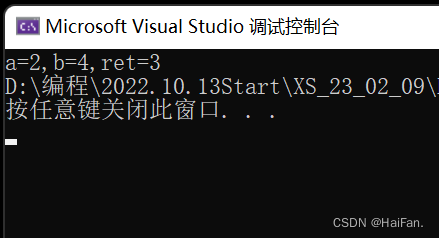
C语言---宏
专栏:C语言 个人主页:HaiFan. 专栏简介:本专栏主要更新一些C语言的基础知识,也会实现一些小游戏和通讯录,学时管理系统之类的,有兴趣的朋友可以关注一下。 #define预处理预定义符号define#define定义标识符…...

算法导论—路径算法总结
图算法 单源最短路径 Bellman-Ford算法: 顶点为V,边为E的图 对每条边松弛|V|-1次边权可以为负值若存在一个可以从源结点到达的权值为负值的环路,算法返回False时间复杂度:O(VE) 有向无环图单源最短路径 DAG-SHORTEST-PATHS …...

程序环境--翻译+执行
ANSI C标准下,有两种程序环境。 第1种是翻译环境,在这个环境中源代码被转换为可执行的机器指令。 翻译环境包括:预处理(预编译)编译汇编链接。四个步骤。 第2种是执行/运行环境,它用于实际执行代码。 链接…...

微信小程序内部那些事
微信小程序没有window、document,它更像是一个类似 Node.js 的宿主环境。因此在小程序内部不能使用 document.querySelector 这样的选择器,也不支持 XMLHttpRequest、location、localStorage 等浏览器 API,只能使用小程序自己提供的 API&…...

这是从零在独自开开发,将是副业赚钱最好的平台!
文章目录最重要的事情放前面1.前言2.简单介绍一下3.【独自开】介绍3.1 分层标准化平台架构3.2 集成第三方数字接口3.3 支持各个行业的系统定制开发4.如何在【独自开】赚钱获取收益?4.1 如何称为【独自开】开发者?最重要的事情放前面 通过平台的审核也可以得到相应的奖金&…...

Spring MVC 之获取参数(对象、JSON格式数据、URL地址参数、文件、Cookie)
文章目录1. 获取单个参数2. 获取多个参数3. 获取对象4. 后端参数重命名 RequestParam5. 接收 JSON 格式的数据 RequestBody6. 从 URL 地址中获取参数 PathVariable7. 上传文件 RequestPart8. 获取Cookie (CookieValue)/Session/header8.1 获取 Request 和 Response 对象8.2 获取…...

永磁同步电机中BEMF电阻的作用
一、电路原理图 二、原理分析 如图一我们测的是相电压,从理论上我们知道我们测得相电压是一个马鞍波形,马鞍波形中并没有隐含 转子的位置和速度信息。那么为什么我们还要有这样一个电路呢? 这个问题其实困惑了我好久?直到有一天…...

JAVA练习45-二叉树的层序遍历
提示:文章写完后,目录可以自动生成,如何生成可参考右边的帮助文档 前言 提示:这里可以添加本文要记录的大概内容: 提示:以下是本篇文章正文内容,下面案例可供参考 一、题目二叉树的层序遍历 …...

超高精度PID调节器的特殊功能(3)——变送输出(转发)功能及其应用
摘要:变送输出是高级PID控制器的一项重要扩展功能,可用于多区控制、串级控制、比值控制和差值控制以及数据采集及记录。为展示变送输出功能的强大作用,本文主要针对超高精度VPC 2021系列PID控制器,介绍了变送输出的具体功能、参数…...

【C++】nullptr C++中的空指针(C++11)
前言 在平时我们写C/C代码时你可能会看到有人使用NULL表示空指针,也有人用nullptr表示空指针,那么你可能会很好奇它们都是空指针吗?为什么空指针有两种写法?下面就带你了解这背后的原理。 我们都知道NULL是C语言中的空指针&#x…...

CVPR 2025 MIMO: 支持视觉指代和像素grounding 的医学视觉语言模型
CVPR 2025 | MIMO:支持视觉指代和像素对齐的医学视觉语言模型 论文信息 标题:MIMO: A medical vision language model with visual referring multimodal input and pixel grounding multimodal output作者:Yanyuan Chen, Dexuan Xu, Yu Hu…...
)
进程地址空间(比特课总结)
一、进程地址空间 1. 环境变量 1 )⽤户级环境变量与系统级环境变量 全局属性:环境变量具有全局属性,会被⼦进程继承。例如当bash启动⼦进程时,环 境变量会⾃动传递给⼦进程。 本地变量限制:本地变量只在当前进程(ba…...
使用rpicam-app通过网络流式传输视频)
树莓派超全系列教程文档--(62)使用rpicam-app通过网络流式传输视频
使用rpicam-app通过网络流式传输视频 使用 rpicam-app 通过网络流式传输视频UDPTCPRTSPlibavGStreamerRTPlibcamerasrc GStreamer 元素 文章来源: http://raspberry.dns8844.cn/documentation 原文网址 使用 rpicam-app 通过网络流式传输视频 本节介绍来自 rpica…...

可靠性+灵活性:电力载波技术在楼宇自控中的核心价值
可靠性灵活性:电力载波技术在楼宇自控中的核心价值 在智能楼宇的自动化控制中,电力载波技术(PLC)凭借其独特的优势,正成为构建高效、稳定、灵活系统的核心解决方案。它利用现有电力线路传输数据,无需额外布…...

Neo4j 集群管理:原理、技术与最佳实践深度解析
Neo4j 的集群技术是其企业级高可用性、可扩展性和容错能力的核心。通过深入分析官方文档,本文将系统阐述其集群管理的核心原理、关键技术、实用技巧和行业最佳实践。 Neo4j 的 Causal Clustering 架构提供了一个强大而灵活的基石,用于构建高可用、可扩展且一致的图数据库服务…...

【AI学习】三、AI算法中的向量
在人工智能(AI)算法中,向量(Vector)是一种将现实世界中的数据(如图像、文本、音频等)转化为计算机可处理的数值型特征表示的工具。它是连接人类认知(如语义、视觉特征)与…...
)
论文解读:交大港大上海AI Lab开源论文 | 宇树机器人多姿态起立控制强化学习框架(一)
宇树机器人多姿态起立控制强化学习框架论文解析 论文解读:交大&港大&上海AI Lab开源论文 | 宇树机器人多姿态起立控制强化学习框架(一) 论文解读:交大&港大&上海AI Lab开源论文 | 宇树机器人多姿态起立控制强化…...

【python异步多线程】异步多线程爬虫代码示例
claude生成的python多线程、异步代码示例,模拟20个网页的爬取,每个网页假设要0.5-2秒完成。 代码 Python多线程爬虫教程 核心概念 多线程:允许程序同时执行多个任务,提高IO密集型任务(如网络请求)的效率…...

MySQL中【正则表达式】用法
MySQL 中正则表达式通过 REGEXP 或 RLIKE 操作符实现(两者等价),用于在 WHERE 子句中进行复杂的字符串模式匹配。以下是核心用法和示例: 一、基础语法 SELECT column_name FROM table_name WHERE column_name REGEXP pattern; …...
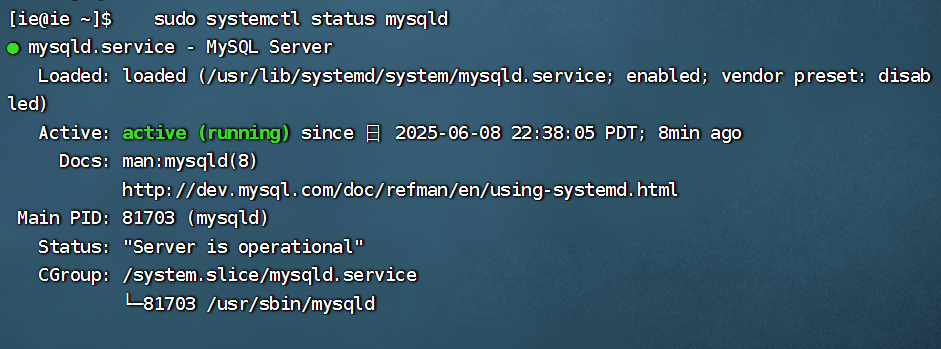
项目部署到Linux上时遇到的错误(Redis,MySQL,无法正确连接,地址占用问题)
Redis无法正确连接 在运行jar包时出现了这样的错误 查询得知问题核心在于Redis连接失败,具体原因是客户端发送了密码认证请求,但Redis服务器未设置密码 1.为Redis设置密码(匹配客户端配置) 步骤: 1).修…...
